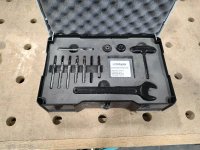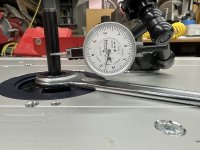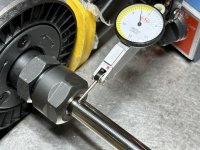Michael Kellough
Member
Thanks Cheese!
Very interesting and informative and the only place I’ve seen to buy precision collets.
Now I want to check out my Shaper collets. I’ve had trouble with 1/32” bits cutting copper but there are several possible reasons.
Maybe I need a better collet but I guess we can only use Festool’s proprietary collets?
Very interesting and informative and the only place I’ve seen to buy precision collets.
Now I want to check out my Shaper collets. I’ve had trouble with 1/32” bits cutting copper but there are several possible reasons.
Maybe I need a better collet but I guess we can only use Festool’s proprietary collets?




